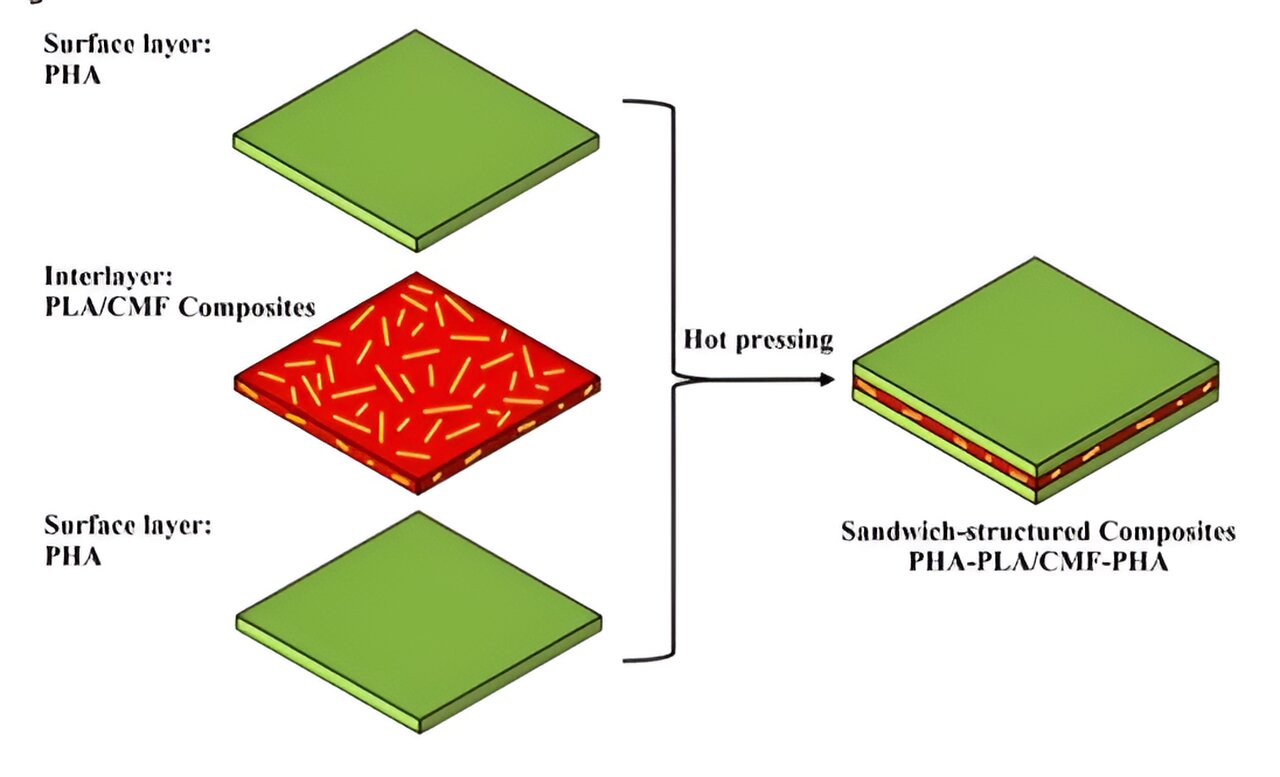A new sandwich-structured composite has been developed from the surface layers of polyhydroxyalkanoate (PHA) and the interlayer of polylactic acid and cellulose microfibers. The biodegradable cellulose microfibers can be modified chemically with a sol-gel process to improve the compatibility between natural reinforcement and the polymer matrix.
Masoud Dadras Chomachayi and a research team at the Laval University, Canada, observed thermogravimetric analyses of the constructs to show improved thermal stability. They improved the mechanical properties of the constructs to increase its tensile modulus and strength. When the scientists added untreated fibers to the constructs, the water vapor permeability of the sandwich composite increased to show the superiority of modified cellulose microfibers when compared to untreated cellulose microfibers to develop building envelopes.
The research is published in the journal Scientific Reports.
The art of building a building envelope
The building envelope is an essential part of a building structure that protects occupants from exterior environmental impacts including sun, rain, snow, wind and pollution. This multilayer passive element is significant for energy efficiency and to maintain the health and comfort of the residents in the building. The process of air leakage, heat transfer and moisture diffusion can have significant effect on the building envelope. For instance, in cold climates, the mass concentration of water vapor on the interior of the building is higher than the exterior, causing the migration of moisture through the building walls.
2023-12-19 01:00:03
Link from phys.org
